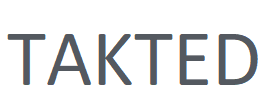[IDC] The Blockchain Innovations in Oracle Database
- March 12, 2021
- Posted by: Konstantin Gork
- Category: Databases
Guest post by Carl Olofson, Research Vice President, Data Management Software,IDC
Blockchain has been a subject of fascination since it was developed in 2008. It was originally developed to be the backbone for processing the crypto-currency Bitcoin, and is also used as an irrefutable ledger system. Blockchain offers a number of attractive features for business: its contents, once written, are virtually unalterable, and because it provides a secure place for ensuring the exact state of some entity (such as, in the case of Bitcoin, a coin).
But blockchain has its drawbacks for business implementation. The blockchain is managed by the consensus of some number of independently managed servers, which makes sense when used to manage transactions between independent parties, but less so when the parties are all members of the same business. Complex queries on blockchains are virtually impossible due to the size of the chain and the nature of the way data is retrieved, and a number of services have emerged that copy blockchain contents into a table for reporting, but this is a time consuming process. IDC has found that businesses have a tough time setting up and maintaining blockchains due to the cost and technical complexity involved.
A number of major software vendors have developed alternatives to blockchain that also act as immutable ledgers that involve encryption, and ensure the inviolability of the transactions they record, but within the frameworks of their database environments, allowing for reporting, and operated by a single server rather than a group of disaggregated systems. Such solutions make sense within the confines of their data management environments.
Oracle now has capabilities in Oracle Database 19c and 21c to facilitate Crypto-Secure Data Management. Juan Loaiza, Executive Vice President of Mission-Critical Database Technologies, took us through these capabilities on March 1st. Like the other options, it offers multiple levels of security to protect the contents of the ledger, and is designed to make modification or deletion of data virtually impossible. It uses cryptographic digests and cryptographic signatures to ensure secure data management. Because it is immutable, even rogue users with proper credentials cannot modify its contents within the context of the database, although it is impossible to completely prevent data from being stolen.
This data is kept in Immutable Tables, which are implemented as Blockchain tables with rows that are chained to existing rows cryptographically, so even if someone can bypass the database server and access the data, and has the encryption key, if such a person modifies the data, it breaks the chain, requiring recovery. In this way, one can be certain that everything in the blockchain is original and unaltered, which is critically important for such things as audits, regulatory reporting, and legal evidence in court.
For Oracle users, the big differentiator here is that this feature is engineered directly into Oracle Database, and offered at no additional cost. The ledgers are implemented as Blockchain Tables that are created by simply adding “Blockchain” to a table creation statement and are accessible like other tables in the database. This means that they can be queried using Oracle SQL, and so existing applications are easily connected with the Blockchain Tables. It also means that implementation is simple, and that the data is protected by standard Oracle log files, TDE end-to-end security, backup/recovery processes, and other Oracle security products.
There are several key benefits here. One is that with the Oracle capability, the same technology that is used to manage mission and business critical data is used to manage the ledger (that is, blockchain) data, and the same skill set is required for operations on that data. Another benefit is that the blockchain data can be related to other regular data in the database, ensuring integrity and a richer reporting environment. Finally, the operational benefit cannot be overemphasized. Because the blockchain data is in Oracle Database, there is one backup schedule, and all the data is maintained together, so that database recovery, if necessary, is completely consistent. Other database providers offer blockchain capabilities as well, usually as a separate specialized database which is therefore outside the production database, and requires some sort of operational data movement or external coordination between the two. Using such an external system means that extra effort would be required for keeping the data consistent across databases. In addition, in case of data recovery, there would be a very real possibility that blockchain data would fall out of synch with related data in the database.
Blockchain functionality is the most straightforward way to ensure that data critical to accounting and reporting is kept in its original state, free of modification or corruption. This is key for a number of regulated industries, including financial services and healthcare. Oracle Crypto-Secure Data Management is the best option for Oracle Database users who want to integrate blockchain functionality into their applications.




